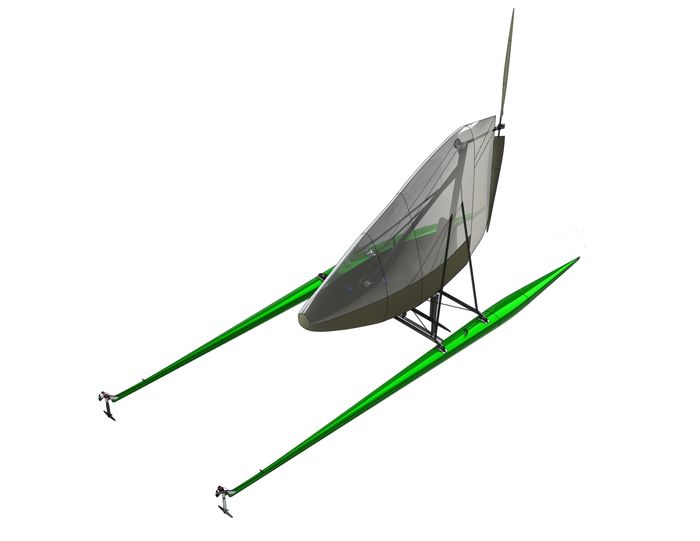'Project Leviathan' Watercraft Aims to Break World Speed Record

An ambitious group of students is building a human-powered water vehicle that they hope will set a new world speed record.
With project Leviathan, as the vehicle is known, the students will attempt to reach a blistering pace of 23 miles per hour (37 km/h), breaking the current speed record of 21 mph (34 kph) that was set by the Massachusetts Institute of Technology, in Cambridge, in 1991.
A team of mechanical engineering students at the University of Sherbrooke, in Canada, has been working for the past two years to build the speedy craft, which will make its world record attempt in the summer of 2015, in a 330-foot (100 meters) sprint course. [Gallery of Wonders: The Weirdest World Records]
"The vehicle itself has to be perfected for both aerodynamic and hydrodynamic performance," said Christian Blais, a student at the University of Sherbrooke who serves as the team's treasurer and designer of the vehicle's hulls and cockpit.

The team is made up of 13 students, each of whom is responsible for one of the vehicle's 13 subsystems, Blais told Live Science.
The vehicle is powered completely by human pedaling, which drives a propeller in the water. The twin-hulled craft resembles a catamaran, but underneath each hull is a submerged wing, or hydrofoil, like those found on some racing boats.
"Once we hit that sweet spot [of] 5 to 8 meters per second (11 mph), it will start to come out of the water onto the hydrofoils," Blais said. "It’s a vehicle built for speed."
Sign up for the Live Science daily newsletter now
Get the world’s most fascinating discoveries delivered straight to your inbox.
An onboard computer controls the front hydrofoils to keep the boat stable, a feature that previous human-powered watercraft lacked, Blais said. The pilot can also change the angle of the propeller blades to optimize them for different speeds, he said.
The vehicle's driver, who was selected at the beginning of the project, is an experienced cyclist and cycling coach. Piloting the craft is a very demanding job, Blais said. "He has to have a cool head, because not only does he have to pedal fast, he has to control things, such as the steering, transmission and the pitch of the [propeller] blades," he added.
Construction of the speedy vehicle is not yet complete, but it should be done by the end of October or the beginning of November, Blais said. The team members will test their craft on a big lake, or a pool on their university's campus, before the real race next summer.
So far, the team has raised about $25,000 to $27,000 ($28,000 to $30,000 Canadian) from sponsors. The students launched a crowdfunding campaign on the website Kickstarter, which has raised an additional $5,600 ($6,375 Canadian).
The team has no plans to commercialize the vehicle, but the students have considered starting a university competition to build and race the high-tech vehicles, Blais said.
Follow Tanya Lewis on Twitter and Google+. Follow us @livescience, Facebook & Google+. Original article on Live Science.












